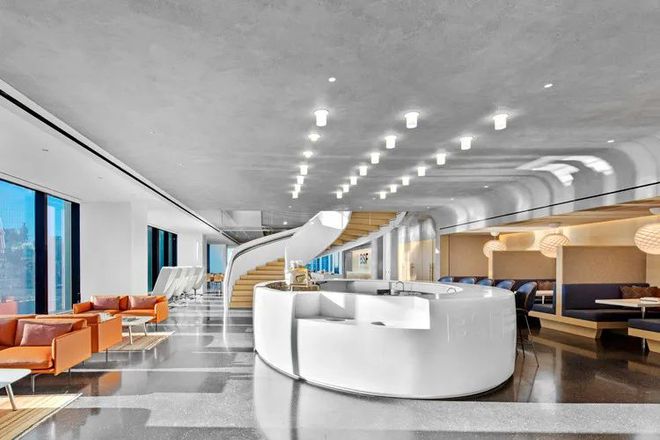 Consider the requirements of the commercial atmosphere, set off the environment, and determine the combination of light sources and colors in each area. Color often plays a decisive role in creating a commercial atmosphere, and color in turn depends on color temperature. Usually, warm colored light sources can create a stable and gentle feeling. As the color temperature increases, the light source gradually appears white and blue, giving people a bright and cool feeling. Therefore, according to the specific business characteristics and overall environmental requirements, full attention should be paid to the selection of the combination of illumination and color temperature in the design.
Consider the requirements of the commercial atmosphere, set off the environment, and determine the combination of light sources and colors in each area. Color often plays a decisive role in creating a commercial atmosphere, and color in turn depends on color temperature. Usually, warm colored light sources can create a stable and gentle feeling. As the color temperature increases, the light source gradually appears white and blue, giving people a bright and cool feeling. Therefore, according to the specific business characteristics and overall environmental requirements, full attention should be paid to the selection of the combination of illumination and color temperature in the design.
2. Key lighting penetrates into commercial display windows, shelves, goods, entrances and exits, and other spaces. The environment of the showcase should be diverse and varied, as it varies depending on the type of product, brand, display method, and spatial composition. In order to highlight certain items inside the showcase, key lighting or decorative lighting can be configured to achieve a special sense of light and texture, making it achieve the effect of color expression. Special attention should be paid to selecting lighting fixtures that can freely change the lighting defense line in the display window to meet the constantly changing needs of the displayed products.
The combination of light sources should be designed according to the spatial composition, using lamps with different lighting directions for arrangement, such as top light, backlight, surface light, foot light, etc., to make the overall performance rich in hierarchy and leave a beautiful and lasting impression on people.
One important aspect of key lighting is the lighting at the entrance of the store, including the entrance design of the store, store logo, and other areas, which are all important aspects to attract customers. The lighting design should showcase the artistic quality of commercial buildings while reflecting their commercial nature and characteristics. It is often necessary to appropriately increase the illuminance and pay attention to the concealment of light sources, and increase the organic combination of dynamic lighting sources with store logos, names, patterns, etc., in order to play the finishing touch and achieve commercial goals.
3. Display rack lighting is a commonly used type of commercial lighting. There are generally two types of display racks, one is enclosed, which is purely for display purposes. Another type is open type, which is designed for display in self selected shopping malls. The vertical illumination of its lighting design is even and 1.5-5 times that of the general lighting in the entire commercial environment. Only when the lighting meets certain requirements can a special commercial effect be produced.
When configuring light sources, it is important to avoid direct exposure to the height of the customer’s eyes, which may cause glaring glare. In addition, in order to adapt to changes in product display and spatial layout, auxiliary facilities such as lighting pipe racks can generally be set up to facilitate display changes. In addition to meeting certain lighting requirements, under specific light source conditions, what color should the product have is an important issue in expressing the color characteristics of the product. Generally, it is faithful to the color of the product, naturally and realistically expressed. When designing, a light source with a higher color rendering index can be used. The closer the color rendering index of the light source is to 100, the more realistic the color display of the product will be.
4. The quality performance of a product often arouses customer curiosity, requiring precise consideration of the material and surface treatment characteristics of the product with the characteristics of the light source and light quality in lighting design. Directional illumination tool, which projects light in one direction and lands on the surface of an object to increase the contrast between light and dark surfaces, can effectively reflect the luster of the object’s illuminated surface.
When designing lighting, how to correctly and cleverly use the shadows generated by the light source on the product to increase the three-dimensional effect and appropriately enhance the contrast between light and dark on both sides of the product depends on the relationship between the illuminance difference. The contrast is small, the shadows are not obvious, and tend to be flat. When the contrast between the two is too large, the shadow will be heavy, making the product not clear enough.
At this point, we can use auxiliary light to create a sense of transparency in the shaded area, in order to achieve a good three-dimensional effect. Generally speaking, it is reasonable to adjust the contrast on both sides of the product to a range of 1:3 to 1:5. Of course, this range is not absolute, and it still needs to be adjusted according to the on-site situation.
5. Regarding how to choose lighting fixtures in commercial lighting
The appropriate shading angle, beam angle, and light distribution curve of the lighting fixtures are also very important. The shading angle of lighting fixtures also plays an important role in limiting and eliminating glare, and the larger the shading angle, the smaller the glare. But if the shading angle is too large, the efficiency of the lamp will become very low. So, we generally recommend selecting the shading angle of the lamp between 15-30 degrees.
Post time: 04-10-2024
